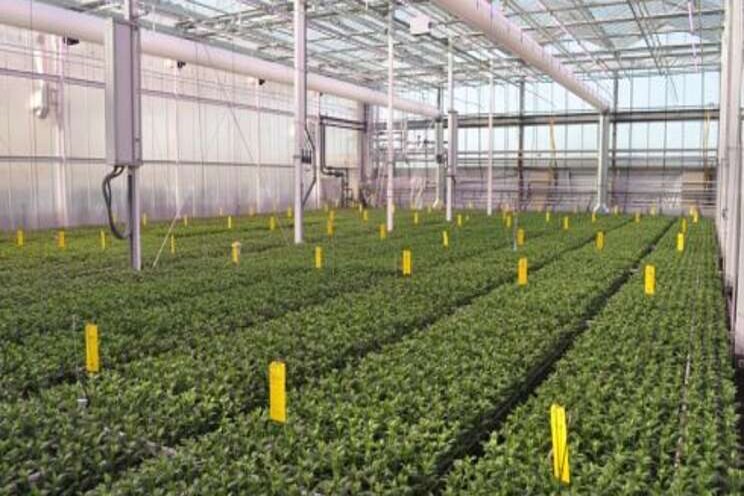LED does not cause a delay in flowering with chrysanthemum
Added on 16 March 2020

Together with Delphy / Improvement Center, WUR is researching the impact of LED lighting and active dehumidification on the cultivation of Chrysanthemum in a year-round cultivation program. The demonstration greenhouse is equipped with LED lamps with an intensity of 185 ?mol.m?˛.s?š.
One of the research questions was whether LED caused a delay in flowering, because there was no far red light in the chosen LED. That appears not to be the case. A lower humidity (from 85 to 90%, compared to around 93% in practice) contributes to the fact that there is no flowering delay. Moreover, the shelf life of the branches is good at a lower humidity. But the branches did have a lower branch weight, which was against expectations.
The current results cause many follow-up questions. Such as: what is the precise effect of far-red light, is the lower branch weight caused by the chosen higher plant density and what is the effect of the temperature, which is different due to the use of LED lamps?
The research into, among other things, LED lighting and plant density in chrysanthemum is carried out by the Greenhouse Horticulture Business Unit of Wageningen University & Research and Delphy / Improvement Center and supervised by chrysanthemum growers. The research is funded by Kas Als Energiebron and contributions from chrysanthemum growers and suppliers.
Source and Photo Courtesy of Wageningen University and Research
Source: Wageningen University & Research
More news















